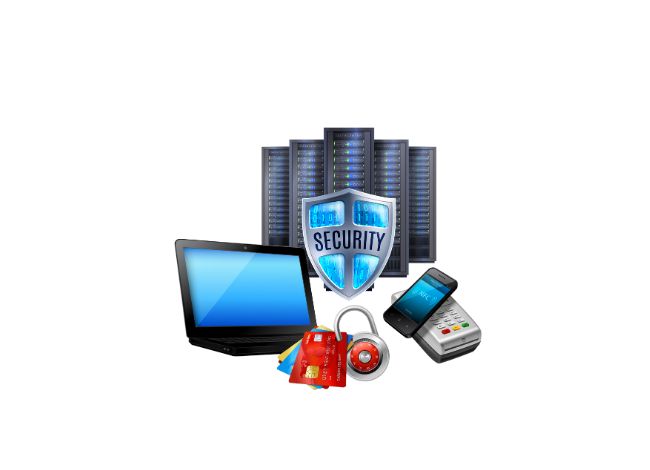1. What is IT and OT Security? Understanding the Basics
In today’s digital landscape, IT and OT security play a critical role in safeguarding businesses from cyber threats. Information Technology (IT) encompasses computer networks, software, and data storage, while Operational Technology (OT) manages industrial control systems (ICS), manufacturing equipment, and other physical processes.
With increased digital transformation, the integration of IT and OT security has become essential. The convergence of these two domains enhances operational technology security, ensuring robust defense mechanisms against cyber threats targeting industrial and business infrastructures.
2. The Growing Need for IT and OT Security Convergence
Cyberattacks on IT technology and operational technology systems have surged in recent years, impacting critical industries like health information technology, energy, and manufacturing. The rapid expansion of computers and information technology into OT environments has blurred the lines between IT and OT security, creating new vulnerabilities.
Why is IT and OT security integration crucial?
Prevents OT cyber security threats such as ransomware and malware.
Enhances management information systems for real-time monitoring.
Reduces downtime and operational disruptions caused by cyber incidents.
Discover Bornsec’s IT and OT security solutions.
3. Key Differences Between IT Security and OT Security
Understanding the fundamental differences between IT security and OT security helps in implementing effective cybersecurity strategies:
4. Major Cybersecurity Challenges in IT and OT Integration
While integrating IT and OT security, organizations face multiple challenges:
Legacy Systems: Many operational technology environments still rely on outdated infrastructure, making them vulnerable to cyber threats.
Increased Attack Surface: Connecting computer software and management information systems with OT networks expands potential entry points for cyberattacks.
Lack of Standardized Security Protocols: Differences in security priorities between IT technology and operational technology cyber security create gaps in defense mechanisms.
5. How Legacy Systems Impact Operational Technology Security
Most OT cyber security environments operate on legacy systems that were not designed for modern cyber threats. These systems lack:
Strong encryption and authentication mechanisms.
Real-time threat detection capabilities.
Compatibility with modern IT technology security protocols.
Best Practices to Secure Legacy OT Systems:
Implement network segmentation to isolate critical systems.
Introduce patch management strategies for outdated OT infrastructure.
Leverage health information technology solutions to monitor threats.
6. Best Practices for Securing IT and OT Networks
To strengthen IT and OT security, organizations should adopt the following strategies:
Zero Trust Security Model: Ensures strict access control across computers and information technology and OT networks.
Threat Intelligence Solutions: AI-driven computer software can detect OT cyber security threats in real-time.
Access Control Policies: Limit user privileges to reduce unauthorized access risks.
7. The Role of AI and Automation in OT Cybersecurity
The integration of AI and automation enhances IT and OT security by:
Predicting cyber threats using machine learning algorithms.
Automating security patching and vulnerability management.
Detecting anomalies in management information systems.
AI-powered OT cyber security solutions provide real-time threat detection, minimizing the risk of cyberattacks affecting industrial operations.
8. Network Segmentation: A Crucial Step in IT-OT Security
Network segmentation separates IT technology from operational technology, reducing the risk of cyber threats spreading across systems. Benefits include:
Preventing unauthorized access to critical OT environments.
Enhancing operational technology security against lateral cyberattacks.
Improving monitoring capabilities for health information technology systems.
Explore how Bornsec enhances cyber security.
9. Regulatory Compliance for IT and OT Security Integration
Industries must comply with strict IT and OT security regulations, including:
NIST Cybersecurity Framework: Guidelines for securing operational technology cyber security.
ISO 27001: A standard for management information systems security.
HIPAA (Health Insurance Portability and Accountability Act): Essential for health information technology security compliance.
Ensuring adherence to these regulations helps organizations enhance cybersecurity resilience and minimize legal risks.
10. Future Trends in IT and OT Cybersecurity: What’s Next?
As IT and OT security evolves, organizations must prepare for future challenges. Key trends include:
Rise of 5G in OT Networks: Enhancing operational technology security with low-latency communication.
Cloud-Based Security Solutions: Offering scalable IT and OT cyber security protection.
Blockchain for OT Security: Strengthening data integrity in management information systems.
Conclusion
The integration of IT and OT security is no longer optional—it’s a necessity in today’s digital landscape. By adopting robust security measures, leveraging AI-driven solutions, and adhering to regulatory frameworks, organizations can safeguard their critical systems against cyber threats. Future-proof your operations with proactive cybersecurity strategies to stay resilient in an evolving threat landscape.
Stay updated on IT and OT security trends by visiting CISA’s Industrial Cybersecurity Resources.




